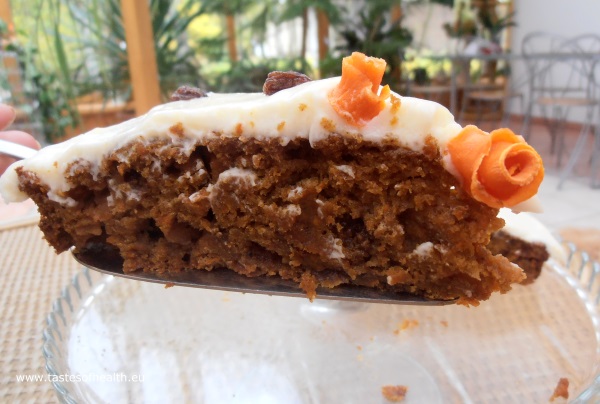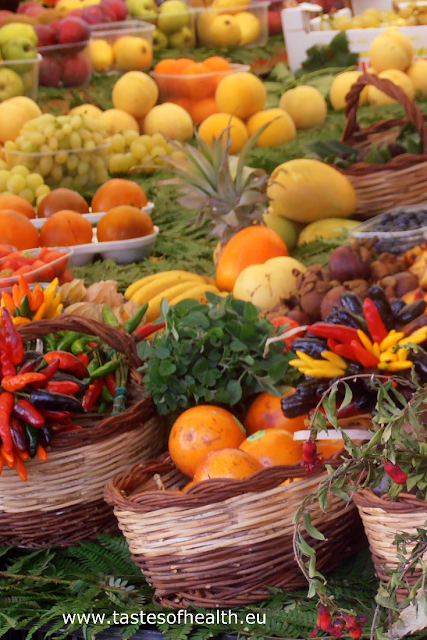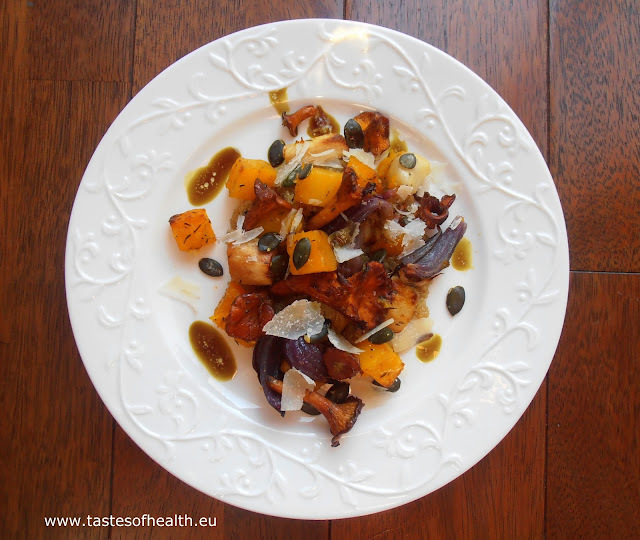I fell in love with carrot cakes from the first moment I
tried one a few years ago. But this was still pretty late in my life – I was
over 20. I think that the idea of baking a cake with a vegetable was in Poland
at least pretty foreign for many years ;-)
But my obsession started when I
tried an a m a z i n g carrot cake while I was in Monterey, California.
The cake was absolutely incredible: moist, heavy but heavenly! Since then I was
on a search for the perfect recipe. I tried lots of different ones but have
never been completely satisfied. And then one day I decided to do it my way:
healthier (wholemeal flour and addition of apples) and lighter (little sugar
and low-fat cream cheese). The result was incredible - my whole family agreed
that was the best carrot cake I had ever baked!
P.S. If you don’t have to count calories, cut the baked and
cooled down cake into two horizontal parts, double the amount of icing
ingredients and use half of the prepared icing to spread on one half of the
cake. Cover with the second half of the cake and spread the rest of icing on
top of it.
INGREDIENTS:
350g grated carrots,
150g apples cut into small pieces,
200g wholemeal flour,
80g dark muscovado sugar,
2 tsp baking soda,
1 tsp salt,
1 tsp cinnamon,
1 tsp gingerbread spices (or mixture of equal amounts of ground
cinnamon, nutmeg and cloves),
70ml rapeseed oil,
3 eggs,
5 tbsp milk,
50g raisins,
Icing:
100g low-fat cream cheese,
1 tbsp soft butter,
1 cup icing sugar,
1 tsp vanilla extract.
METHOD:
- Grease a 20-24 cm diameter round baking tin and put a greaseproof paper on the bottom of it.
- Preheat an oven to 180 degrees.
- In a big bowl mix together the flour, sugar, baking soda, salt, gingerbread spices and cinnamon.
- In another bowl beat together the oil, eggs, milk and add to the dry ingredients, stir quickly only until everything is combined.
- Add the carrots, apples, raisins; stir again.
- Pour the batter to the tin and bake for 25-30 min. (until a wooden stick inserted in the centre of the cake comes out clean) and take it out from the oven.
- Let it rest for 10 min. in a baking tin and then on a wire rack until it cools completely.
- To make the icing, beat the cream cheese with butter till combined, add the icing sugar and vanilla.
- Spread the icing on top of the cold cake.









![Baked Autumn Vegetables with Quinoa [vegetarian/vegan] quinoa, vegetarian, vegan, recipe, recipes, healthy, pumpkin, squash, onion, mushrooms](https://2.bp.blogspot.com/-n3g86ZaHp3Y/V0rX16DsOoI/AAAAAAAABbU/_i0XsfM7AeQNL50I9ps5cVrkG3hcf0FiACLcB/s640/Baked%2BAutumn%2BVegetables%2Bwith%2BQuinoa%2B1%2BPIN.png)

![Grilled Goat's Cheese and Fig Salad [vegetarian] fig, salad, goat's cheese, lettuce,recipe, recipes, vegetarian](https://1.bp.blogspot.com/-eQp0_79AT48/V0raluqDUTI/AAAAAAAABbg/t7OjE_5JPjQR3tWEBdPujKRe4Xa-0OLFgCLcB/s640/Grilled%2BGoat%2527s%2BCheese%2Band%2BFig%2BSalad%2B1%2BPIN.png)


